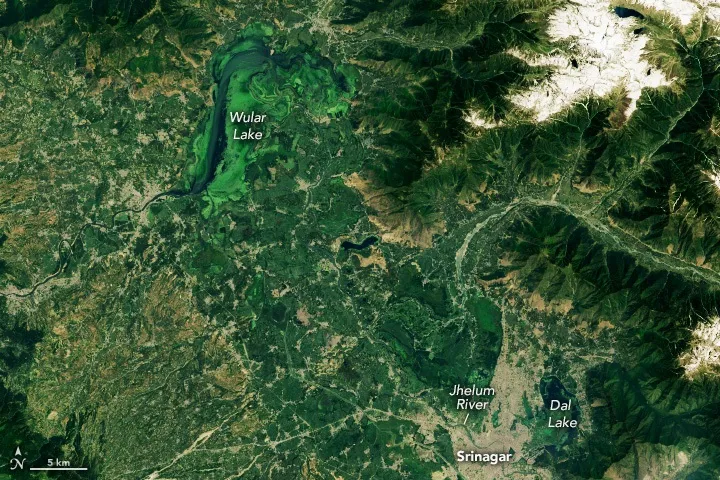Srinagar: The National Aeronautics and Space Administration (NASA), in a recent announcement, has drawn attention to the worrying state of Wular and Dal lakes.
The satellite imagery has uncovered a disconcerting trend of decline in these vital water bodies over the past few years.
The tweet from NASA featured a captivating image urging viewers to closely examine the photo and differentiate between land and water.
“The lakes, once thriving reservoirs, now face significant challenges that threaten their sustainability and the communities that rely on them.”
Look closely. 🧐 Can you tell what’s land and what’s water?
Lakes Wular and Dal, surrounded by the high Himalaya Mountains, supply water for drinking and irrigation in northern India, but the lakes have been declining in recent years. pic.twitter.com/hC628ZQjG0
— NASA Earth (@NASAEarth) June 13, 2023
“Look closely. Can you tell what’s land and what’s water? Lakes Wular and Dal, surrounded by the high Himalaya Mountains, supply water for drinking and irrigation in northern India, but the lakes have been declining in recent years,” tweeted NASA.
Look closely. 🧐 Can you tell what’s land and what’s water?
Lakes Wular and Dal, surrounded by the high Himalaya Mountains, supply water for drinking and irrigation in northern India, but the lakes have been declining in recent years.
Presently, Wular Lake is the largest freshwater lake in India. The lake is situated in Bandipora.
Similarly, Dal Lake is a picturesque body of water nestled in Srinagar, the esteemed summer capital of Jammu and Kashmir. As an urban lake, it boasts the distinction of being the second largest lake in the region while holding the title of the most frequented destination in Srinagar among both tourists and locals alike.











